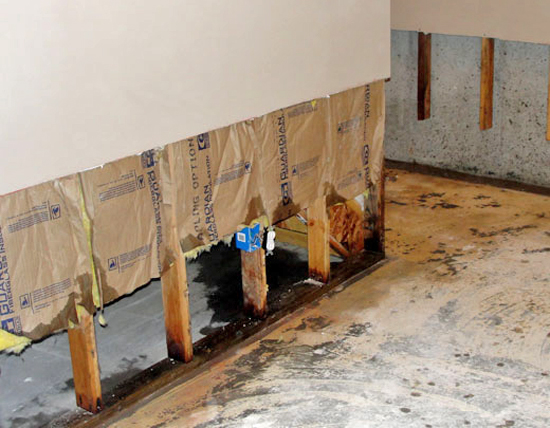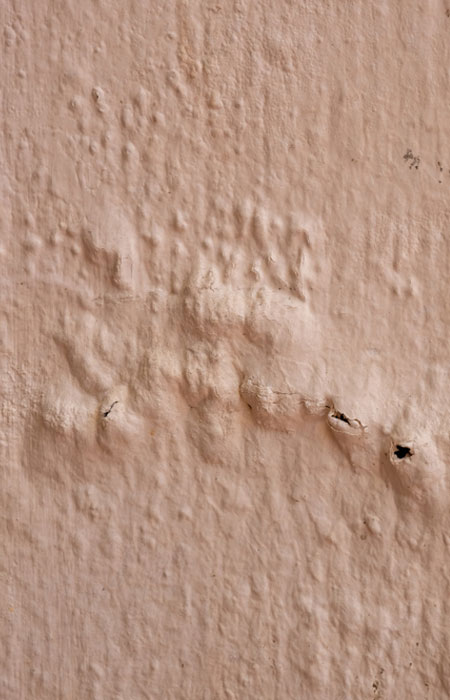Essential Steps to Address Water Stains on Walls: Inspection
Essential Steps to Address Water Stains on Walls: Inspection
Blog Article
Just about everyone is bound to have their personal idea in relation to Indicators of Water Damage Behind Walls.

Water spots on wall surfaces are not enjoyable to the eyes. Your residence should be without discolorations on the walls, roofing system, or floors. That is the ideal state of a house and its frameworks. Yet, in some cases it appears practically unpreventable to experience water spots on walls in residences.
Homeowners residing in humid areas frequently handle the anxiety of water stains on walls. That does not have to be the instance for you. With well-shaped and accurate details on the sources of water discolorations and prompt repair work processes, you will always be an action ahead of such incidents. This article guarantees to be a practical overview for you.
3 Common Causes of Water Discolorations on Wall Surfaces
Unlike common belief, water spots on walls do not always stem from poor structure products. There are numerous sources of water discolorations on wall surfaces. These consist of:
Wet
When warm wet air meets completely dry cool air, it creates water beads to base on the wall surfaces of buildings. This occurs in kitchens and bathrooms when there is steam from cooking or showers. The water droplets can stain the bordering walls in these parts of your house and infect various other areas.
Wet or condensation influences the roofing system and wall surfaces of buildings. This causes them to show up darker than other locations of the house. When the wall is wet, it develops an appropriate environment for the development of microorganisms and fungis. These may have negative impacts on wellness, such as allergic reactions and respiratory system disorders.
Poor Drainage
This will certainly avoid water from permeating into the wall surfaces. This links to too much dampness that you notice on the wall surfaces of your building.
So, the leading source of wet wall surfaces, in this situation, can be an inadequate drain system. It can additionally be because of inadequate monitoring of sewage pipelines that run through the structure.
Pipe Leaks
The majority of homes have a network of water pipes within the walls. It constantly boosts the stability of such pipes, as there is little oxygen within the walls.
A downside to this is that water leakage influences the walls of the building as well as creates widespread damage. An indication of damaged pipes is the appearance of a water discolor on the wall surface.
Pro Tip
A houseplant in your home likewise boosts its moisture. So, if the house is already damp, you might want to introduce houseplants with very little transpiration. An example of suitable houseplants is succulents.
Water Stains on Wall Surface: Repair Tips
Homeowners would generally want a quick fix when dealing with water discolorations. They would quickly understand this is disadvantageous as the water spots repeat. So, right here are a few helpful tips that will certainly assist you in the repair service of water spots on walls:
Conclusion
No one wants to have water discolorations on walls in their residence, it can occur to the best of us. This post gives you utilize, as you now recognize exactly how to manage this accident if it does take place.
It is always best to hire expert solutions to assist fix the damages in your house.
Often it appears nearly inevitable to experience water spots on walls in houses.
In contrast to prominent idea, water stains on wall surfaces do not always stem from bad structure materials. There are numerous causes of water spots on wall surfaces. The water droplets can tarnish the surrounding wall surfaces in these components of your home and also spread to other locations.
Right here are a couple of useful tips that will certainly guide you in the repair service of water stains on wall surfaces:
How to Remove Water Stains From Your Walls Without Repainting
The easy way to get water stains off walls
Water stains aren t going to appear on tile; they need a more absorbent surface, which is why they show up on bare walls. Since your walls are probably painted, this presents a problem: How can you wash a wall without damaging it and risk needing to repait the entire room?
According to Igloo Surfaces, you should start gently and only increase the intensity of your cleaning methods if basic remedies don t get the job done. Start with a simple solution of dish soap and warm water, at a ratio of about one to two. Use a cloth dipped in the mixture to apply the soapy water to your stain. Gently rub it in from the top down, then rinse with plain water and dry thoroughly with a hair dryer on a cool setting.
If that doesn t work, fill a spray bottle with a mixture of vinegar, lemon juice, and baking soda. Shake it up and spray it on the stain. Leave it for about an hour, then use a damp cloth to rub it away. You may have to repeat this process a few times to get the stain all the way out, so do this when you have time for multiple hour-long soaking intervals.
How to get water stains out of wood
Maybe you have wood paneling or cabinets that are looking grody from water stains too, whether in your kitchen or bathroom. Per Better Homes and Gardens, you have a few options for removing water marks on your wooden surfaces.
You can let mayonnaise sit on your stain overnight, then wipe it away in the morning and polish your wood afterward. You can also mix equal parts vinegar and olive oil and apply to the stain with a cloth, wiping in the direction of the grain until the stain disappears. Afterward, wipe the surface down with a clean, dry cloth. Try placing an iron on a low heat setting over a cloth on top of the stain. Press it down for a few seconds and remove it to see if the stain is letting up, then try again until you re satisfied. (Be advised that this works best for still-damp stains.) https://lifehacker.com/how-to-remove-water-stains-from-your-walls-without-repa-1849742925

We had been made aware of that editorial on Water Stains on Walls through a good friend on another web blog. Enjoyed reading our piece? Please share it. Let somebody else find it. I enjoy reading our article about Water Stains on Walls.
Call Today Report this page